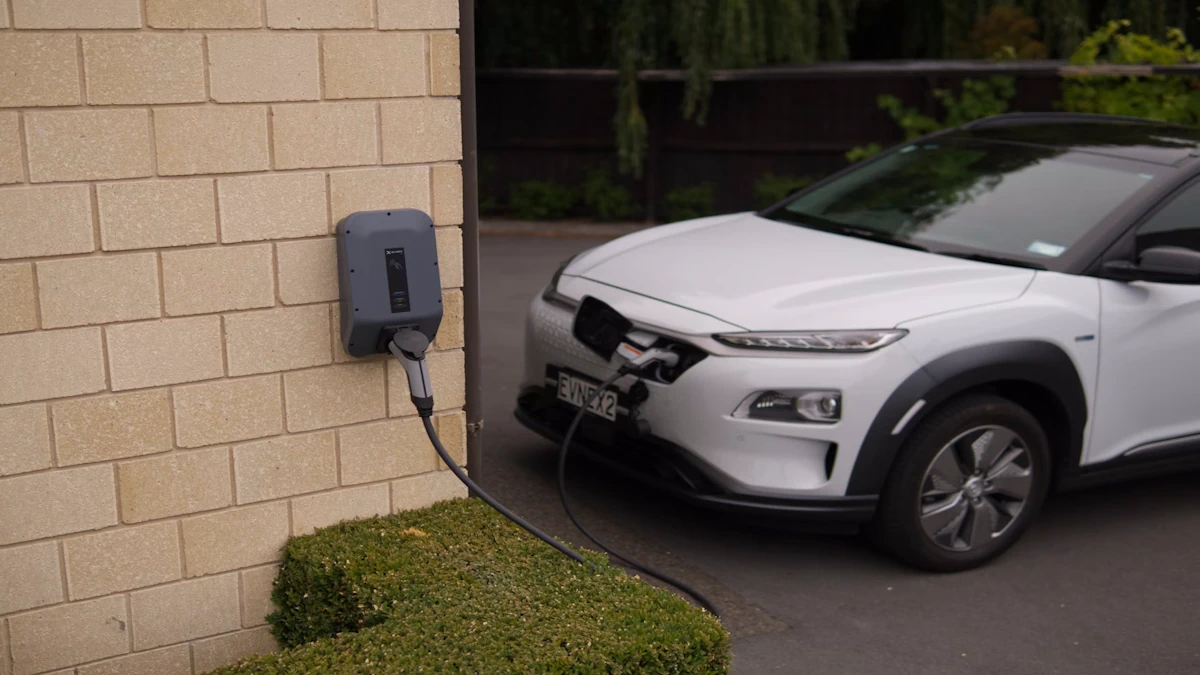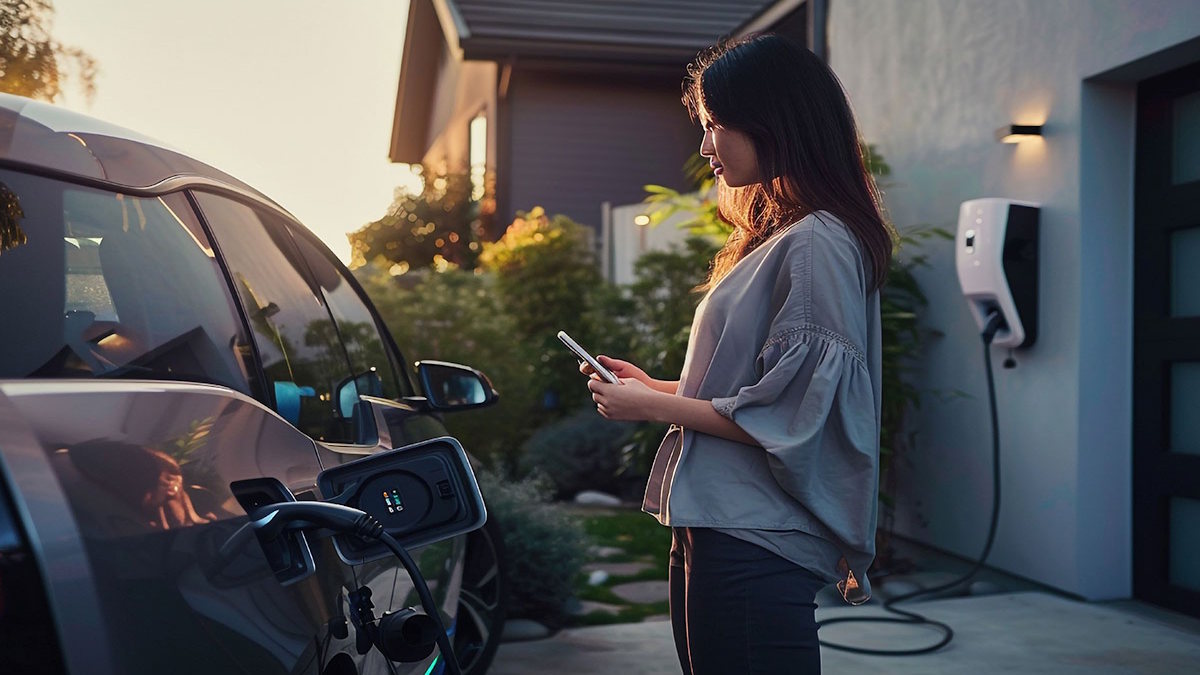 Charging an Electric Car at Home: The Complete 2025 Guide
Charging an Electric Car at Home: The Complete 2025 Guide
Nov 07, 2025
Contents
Home Charging Options
How Long Charging Takes
Costs: Equipment, Labor, Electricity
Installation & Permits
Smart Tariffs, Scheduling & Load Management
Apartments & No-Driveway Solutions
Battery Health & Safety
Solar, Storage & V2X (Optional)
FAQs
Home Charging Options
Head terms: home EV charging, EV home charger, residential EV charging, portable EV charger, Level 1 vs Level 2
At home you’ll typically use AC charging:
Level 1 (120V, North America)Uses a standard household outlet. Slow but simple. Good for low daily mileage or overnight top-ups.
Level 2 (240V single-phase / 230V in many regions)The mainstream choice for home: commonly 3.6–7.4 kW on single-phase; 11–22 kW where three-phase is available.
DC fast charging at homeRare due to cost, power requirements, and noise/space. Most homeowners don’t install DC fast chargers.
The OBC bottleneckYour EV’s on-board charger (OBC) caps the AC charging rate. If the car’s OBC is 7.4 kW, a 22 kW wallbox won’t make AC charging faster.
Charging Options Comparison
Level
Typical Power (kW)
Add-Range (mi/h)*
Pros
Cons
Best For
Level 1 (120V)
1.2–1.9
~3–5
Cheapest to start; use any outlet (properly rated)
Slow; can stress old outlets
Light daily driving, renters
Level 2 (single-phase)
3.6–7.4
~15–30
Fast overnight; broad compatibility
Requires dedicated circuit/installer
Most households
Level 2 (three-phase)
11–22
~35–60
Very fast AC at home (if supported)
Needs three-phase supply; car OBC may limit
High daily mileage, EU homes
*Rule-of-thumb conversions for planning only; real results vary by vehicle efficiency and conditions.
How Long Charging Takes
Head terms: EV charging time at home, how long to charge an EV at home, Level 2 charging time, 7.4 kW charging time
Simple formula:Time (hours) ≈ (Energy to add in kWh) ÷ (Effective power in kW)
Where:
Energy to add (kWh) = Battery capacity × (Target SOC − Start SOC)
Effective power (kW) = min(charger power, OBC limit) × efficiency factor (≈0.9)
Example Time Matrix (estimates)
Assumptions: efficiency 90%; OBC ≥ charger power.
Battery (kWh)
From 20% to 80%
3.6 kW
7.4 kW
11 kW
22 kW
40
24 kWh
~7.4 h
~3.6 h
~2.4 h
~1.2 h
60
36 kWh
~11.1 h
~5.3 h
~3.5 h
~1.8 h
80
48 kWh
~14.8 h
~7.0 h
~4.7 h
~2.4 h
100
60 kWh
~18.5 h
~8.8 h
~5.9 h
~3.0 h
Reality check: Cold weather can slow charging; many EVs taper near full. Most owners target ~80% for daily use.
Costs: Equipment, Labor, Electricity
Head terms: cost to charge EV at home, home EV charging cost calculator, EV charging cost per kWh, off-peak EV charging, TOU EV tariff
Upfront Cost Breakdown (typical components)
Item
Low
Typical
High
Notes
Level 2 hardware
—
—
—
Price varies by features (tethered cable, display, app)
Mounting & accessories
—
—
—
Pedestal, bracket, weather protection
Electrical materials
—
—
—
Cable/conduit, breaker, GFCI/RCD where required
Panel upgrade (if needed)
—
—
—
Only if existing capacity is insufficient
Permit/inspection
—
—
—
Municipality-dependent
Labor (licensed electrician)
—
—
—
Influenced by run length and complexity
(Insert local currency figures once you scope your market.)
Installation & Permits
Head terms: home EV charger installation, EV charger permit, panel upgrade for EV charger, 240V EV charging, NEMA 14-50 (NA), single-phase vs three-phase (EU/UK)
A safe, compliant install protects your panel, property, and warranty. Plan with a licensed electrician and match your plug standard (e.g., J1772/Type 1 in North America, Type 2 in much of Europe; NACS is emerging in NA).
Installation Checklist
Step
Owner / Installer
Status
Notes
Load calculation & panel capacity
Electrician
☐
Main breaker rating, spare capacity
Select location & cable routing
Owner + Electrician
☐
Garage/driveway; weather exposure
Choose circuit & protection
Electrician
☐
Breaker size, GFCI/RCD, wire gauge
Permit application (if required)
Owner/Electrician
☐
Municipality rules
Install & commission
Electrician
☐
Test under load; label circuit
Final inspection & handover
Authority/Electrician
☐
Keep docs & photos
Connector choices: J1772 (Type 1), Type 2, CCS1/CCS2 cables, and NACS adapters/cables—match the car and region.
Smart Tariffs, Scheduling & Load Management
Head terms: smart EV charging, scheduled EV charging, load balancing EV charger, off-peak EV charging, night rate EV charging
Time-of-Use (TOU) / Night rates: Shift charging to cheaper off-peak windows.
Scheduler: Set start/stop times or departure time to pre-condition and finish near departure.
Load balancing: Coordinate with big appliances (HVAC, oven, dryer) to avoid nuisance trips.
Solar matching (optional): If you have PV, align charging with surplus generation.
Small settings, big wins: For many households, simply avoiding 4–9 pm and charging overnight yields most of the savings.
Apartments & No-Driveway Solutions
Head terms: EV charging in apartment, condo EV charging, no driveway EV charging, curbside EV charging, shared garage EV charging
Workplace / community chargers: Leverage daytime parking.
Condo/HOA retrofits: Metering and billing policies can enable assigned-spot charging.
Shared garages: Portable Level 2 on a dedicated, compliant outlet can bridge the gap (follow building rules).
Curbside / municipal: Check local programs near multi-unit dwellings.
Safety first: Don’t run cables across sidewalks. Use approved routes and enclosures.
Battery Health & Safety
Head terms: best SOC for daily charging, charge to 80 percent, EV charging safety at home, outdoor EV charger IP rating
Everyday target: Many owners set ~70–80% for daily driving.
Trip days: Charge to 100% right before you leave.
Avoid deep cycles when possible; keep the pack temperate.
Outdoor gear: Look for appropriate IP/weather ratings and strain relief on cables.
When in doubt: Consult your vehicle manual and a qualified electrician.
Solar, Storage & V2X
Head terms: EV charging with solar, solar EV charger, home battery and EV, V2H/V2G home charging
PV + EV: Maximize self-consumption by timing charging with mid-day solar (or schedule at night if tariffs are cheaper).
Home batteries: Buffer solar for evening charging; weigh cost vs. tariff savings.
V2H/V2G: Emerging options that require compatible vehicles, bi-directional hardware, and utility approval.
FAQs
How long does home EV charging take?Use Battery kWh × (Target − Start) ÷ Effective kW.
Is a 7.4 kW home charger enough?For most households, yes—especially with overnight charging. Your car’s OBC may cap AC speed anyway.
Can I use a regular outlet?Level 1 (120V) works for light daily use. Ensure the outlet and circuit are in good condition and appropriately protected.
Do I need a permit?Often required for new circuits or panel work. Check local rules and use a licensed electrician.
J1772 vs Type 2 vs NACS—what do I need?Match your region and vehicle inlet. Many North American cars use J1772 for AC (NACS emerging); much of Europe uses Type 2.
What’s the cheapest time to charge?Usually overnight off-peak hours on TOU plans. Use scheduling to automate.
Ready to make home charging simple? Explore flexible home and portable EV chargers from Workersbee and get guidance that matches your panel, plug standard, and parking setup.
Browse Portable Chargers: Portable EV Charger,Electric Car Charger,16A EV Charger Suppliers
Read More

 Charging an Electric Car at Home: The Complete 2025 Guide
Charging an Electric Car at Home: The Complete 2025 Guide
 Can You Use Your Electric Car While Charging?
Can You Use Your Electric Car While Charging?